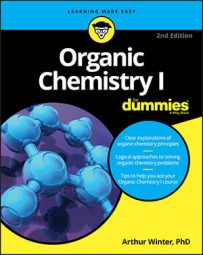For example, the compound shown here contains a carbon atom with four nonidentical substituents; this carbon atom is a chiral center, and the molecule itself is chiral, because it's nonsuperimposable on its mirror image.
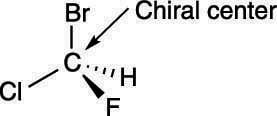
When looking at a molecule, look for carbons that are substituted with four different groups. See, for example, if you can spot the two chiral centers in the molecule shown here.

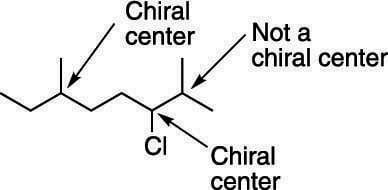
How to identify molecules as meso compounds
A meso compound contains a plane of symmetry and so is achiral, regardless of whether the molecule has a chiral center. A plane of symmetry is a plane that cuts a molecule in half, yielding two halves that are mirror reflections of each other.
By definition, a molecule that's not superimposable on its mirror image is a chiral molecule. Compounds that contain chiral centers are generally chiral, whereas molecules that have planes of symmetry are achiral and have structures that are identical to their mirror images.
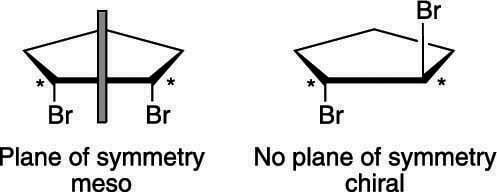
Now look at the mirror images of these two molecules in the second figure to prove this generality to yourself.

In organic chemistry, you need to be able to spot planes of symmetry in molecules so you can determine whether a molecule with chiral centers will be chiral or meso. For example, can you spot the planes of symmetry in each of the meso compounds shown in the last figure?

How to Identify the Diastereomers of a Molecule
When more than one chiral center is present in a molecule, you have the possibility of having stereoisomers that are not mirror images of each other. Such stereoisomers that are not mirror images are called diastereomers.
Typically, you can only have diastereomers when the molecule has two or more chiral centers.
The maximum number of possible stereoisomers that a molecule can have is a function of 2n, where n is the number of chiral centers in the molecule. Therefore, a molecule with five chiral centers can have up to 25 or 32 possible stereoisomers! As the number of chiral centers increases, the number of possible stereoisomers for that compound increases rapidly.For example, the molecule shown here has two chiral centers.
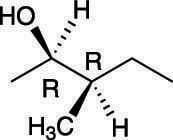
Enantiomers are stereoisomers that are mirror images of each other.
Because both chiral centers in this molecule are of R configuration, the enantiomer of this molecule would have the S configuration for both chiral centers. All the stereoisomers of this molecule are shown in the next figure. Those molecules that are not enantiomers of each other are diastereomers of each other.

